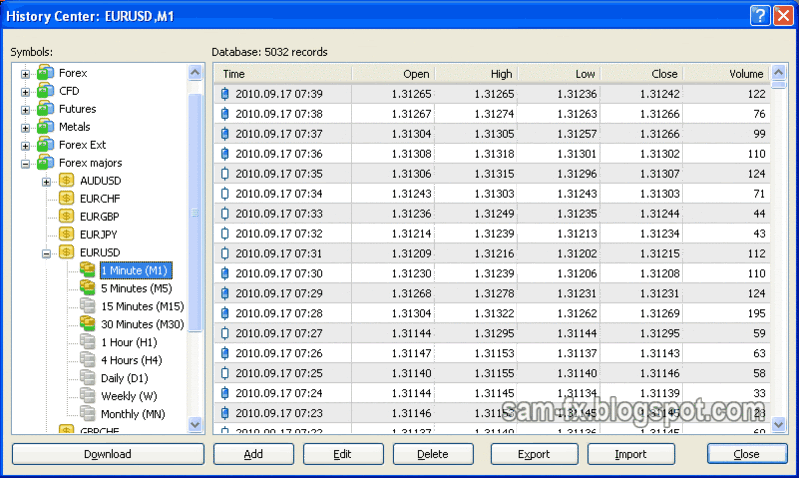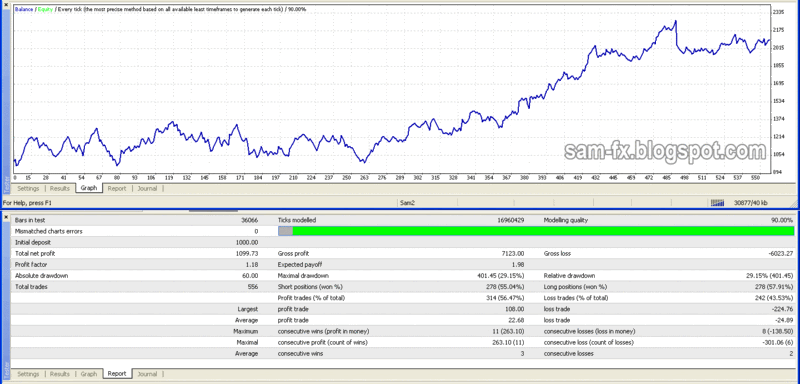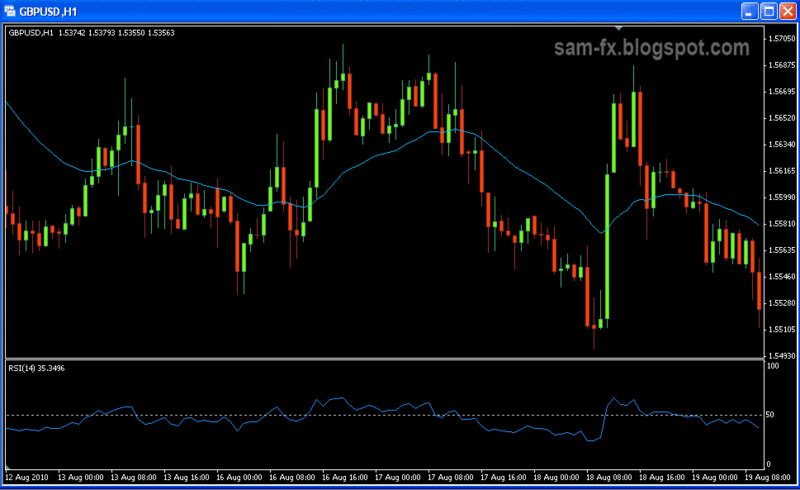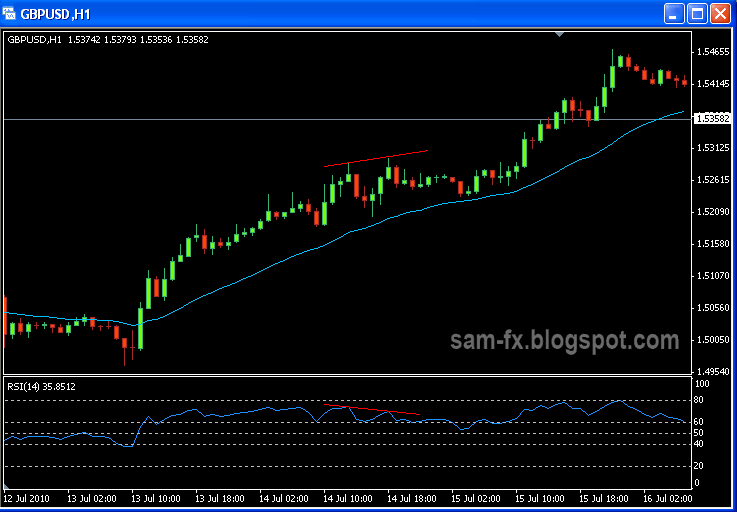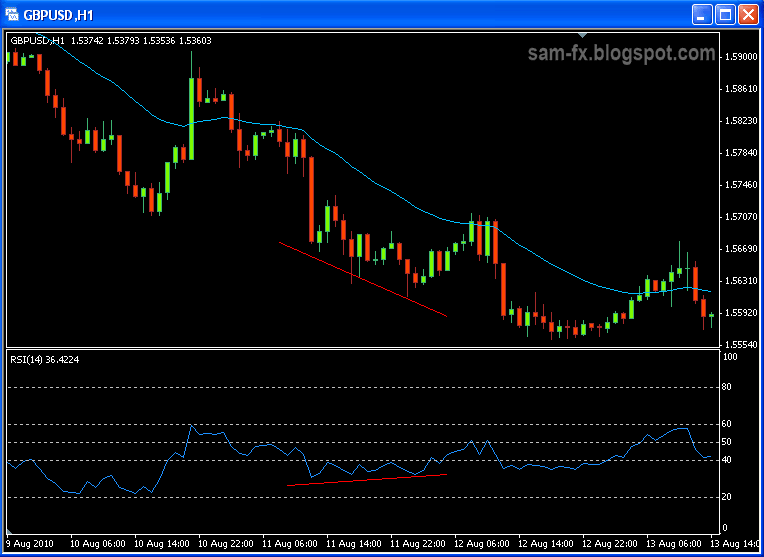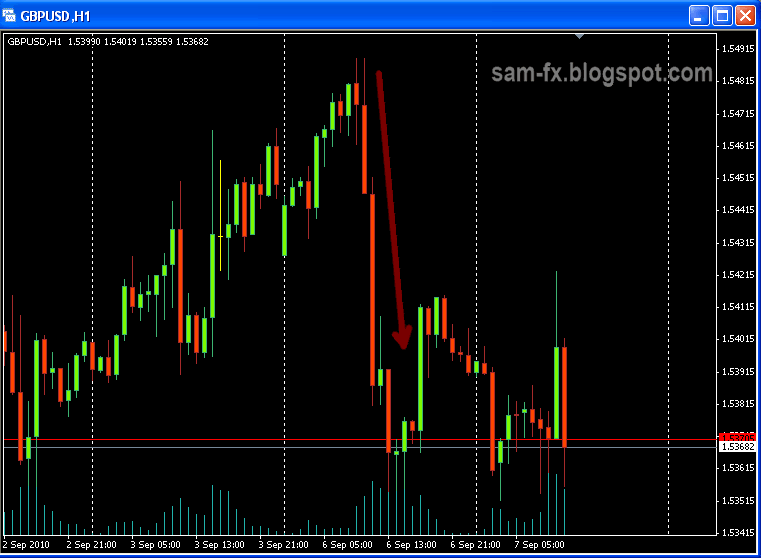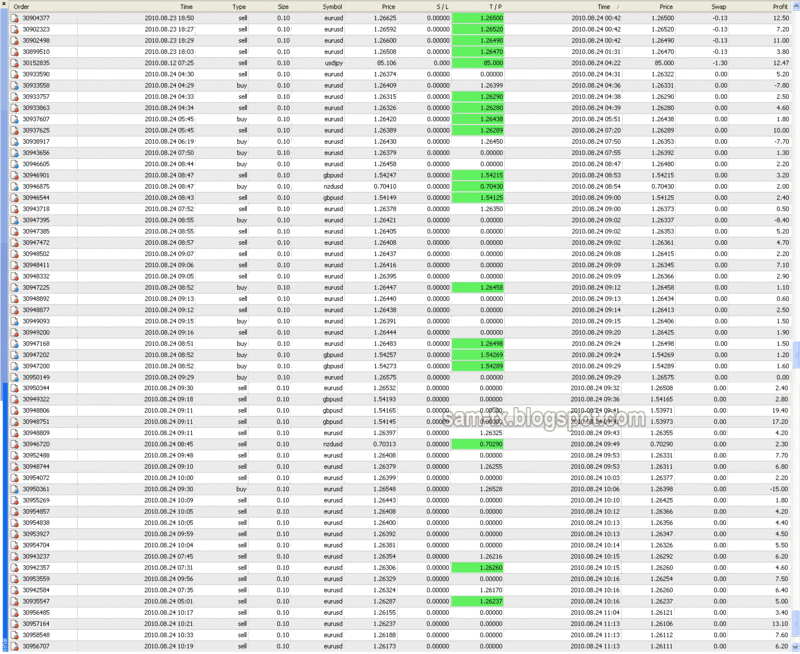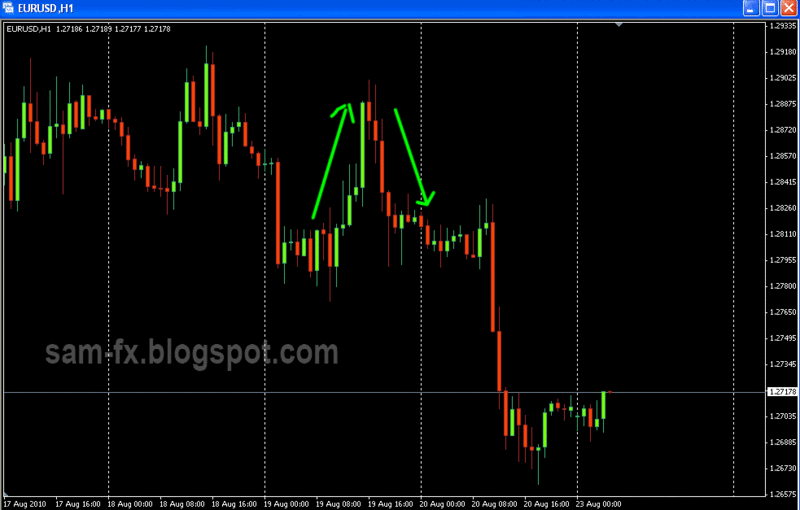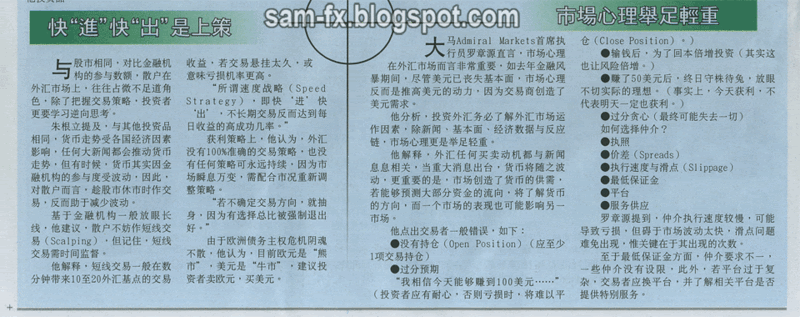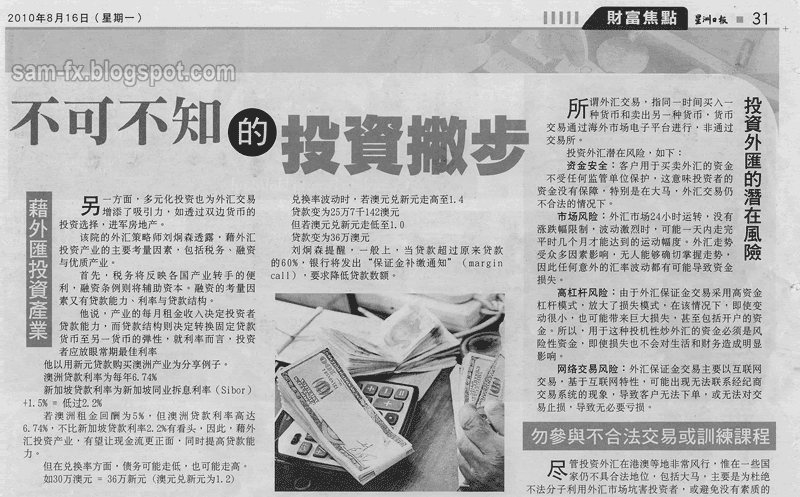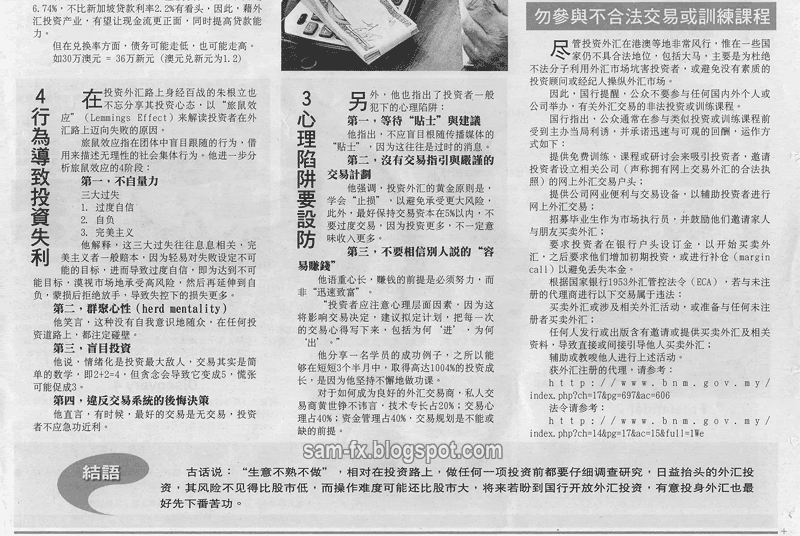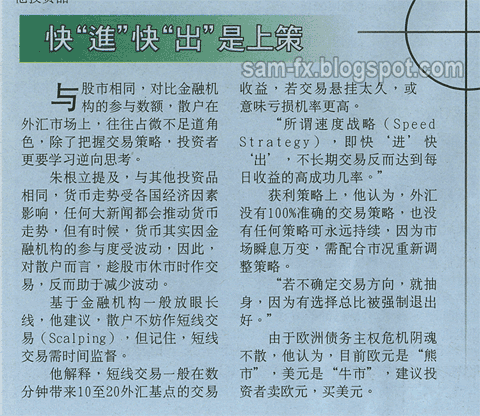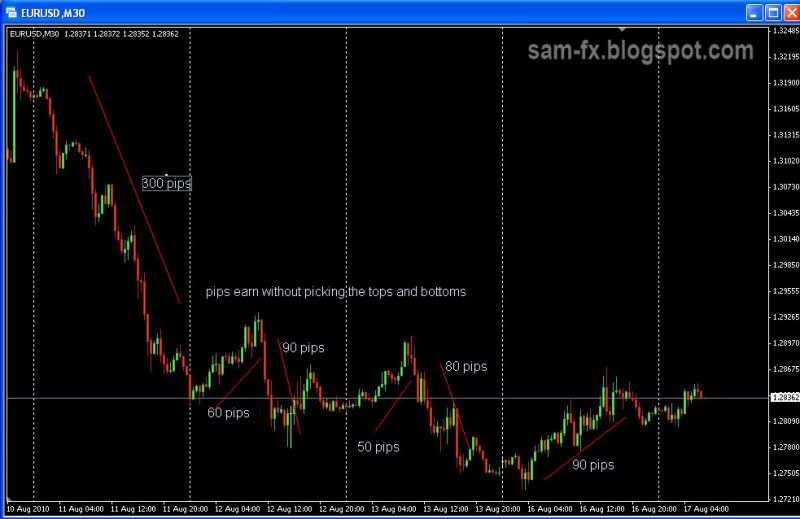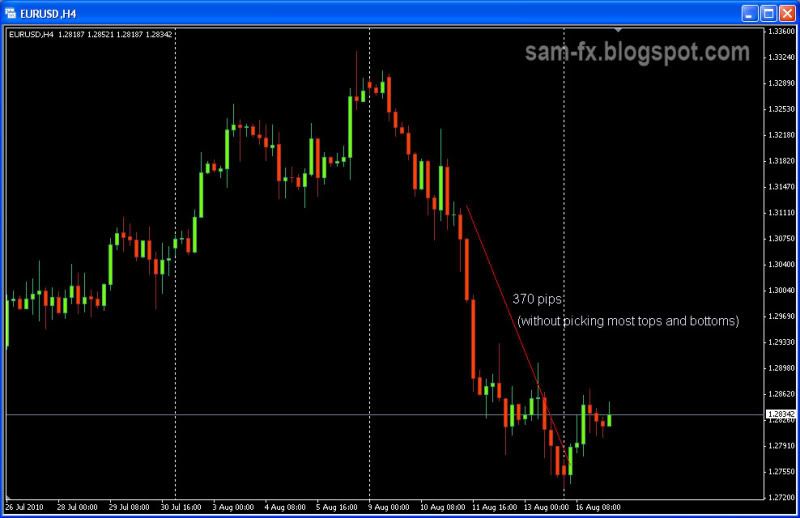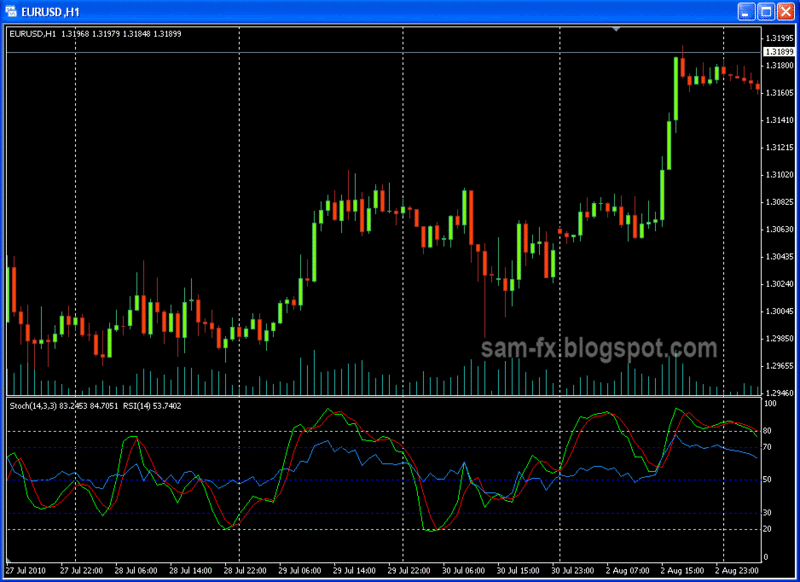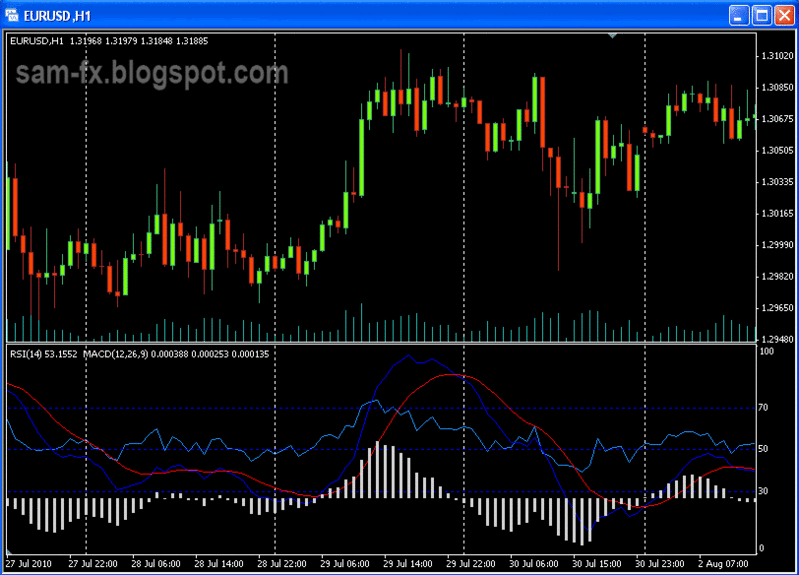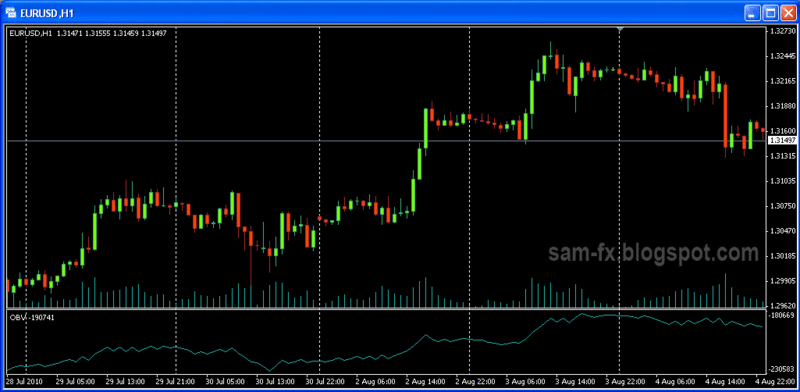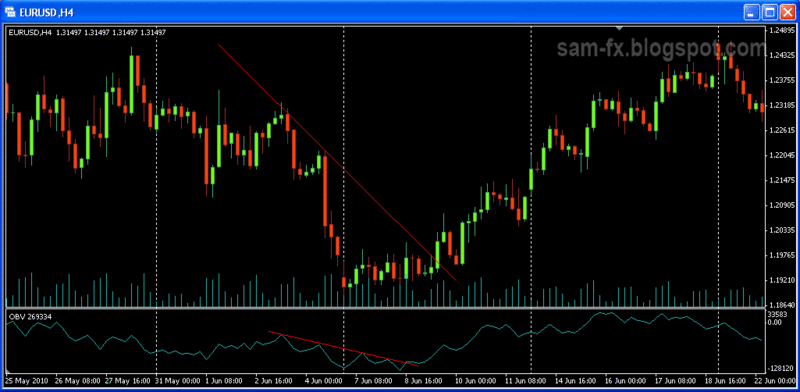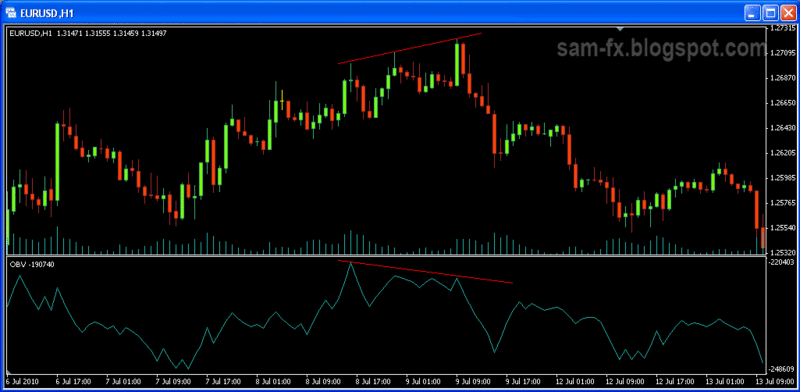Yesterday I being stopped out again. Total earning is 60 pips. This is because I trail my stops too near. This is the dilemma, Trailing nearer give less risk, but easier to get stop out. Tailing far giving more risk on loosing pips, but can yield bigger reward. More pictures below..
The graphic here show my entry, and the point i being stopped out. If i have stay in the trade, the income would have doubled for today.
Read more!
Tuesday 23 November 2010
Tuesday 16 November 2010
Trailing Stops in Metatrader
I have been testing out trailing stops feature on Metatrader lately. In this posting I will talk more about this wonderful feature. Also attach here are some of my trailing stops result.
To use the trailing stop on your Metatrader, right-click on your opened trade (inside terminal window), and select trailing stop, then select the amount you need. By default there are pre-determine points, but you may enter your own value as trailing stops.
When the price move more than the amount from your entry (or your previous stops), Metatrader will automatically set new stops. Because trailing stops is executed with the MetaTrader client, thus the client has to be left running to enable the trailing stops.
I have been trying with various value for trailing stops. Set the value too small, and the trailing stops will move according to price, but we will get stop out at slight retrace of the price. This is not good as the price will continue to move a great deal after the retracement.
If setting the trailing stops too big, we might miss out some trade, some winning trade may be too small to move the trailing stops, and reverse out and cause losses.
I still have not find the suitable value on each timeframe yet. Will be working out ways to optimized it.
Read more!
To use the trailing stop on your Metatrader, right-click on your opened trade (inside terminal window), and select trailing stop, then select the amount you need. By default there are pre-determine points, but you may enter your own value as trailing stops.
When the price move more than the amount from your entry (or your previous stops), Metatrader will automatically set new stops. Because trailing stops is executed with the MetaTrader client, thus the client has to be left running to enable the trailing stops.
I have been trying with various value for trailing stops. Set the value too small, and the trailing stops will move according to price, but we will get stop out at slight retrace of the price. This is not good as the price will continue to move a great deal after the retracement.
If setting the trailing stops too big, we might miss out some trade, some winning trade may be too small to move the trailing stops, and reverse out and cause losses.
I still have not find the suitable value on each timeframe yet. Will be working out ways to optimized it.
Read more!
Labels:
forex trading,
trailing stops
Friday 12 November 2010
Indicator: ZigZag Indicator
The zigzag indicator is not really an indicator. It is used to illustrate the price trend in clear form, filter out less significant price change and noise.
Zigzag indicator using percentage of difference in its construction. When a swing low or high is more than the percentage, the line is drawn. Other swings high or low that are smaller than the percentage of changes are ignored. The ZigZag indicator did not have predictive power.
Usage
Zigzag indicator used to highlight the trend. It can be used to determine the direction of trend. It however does not indicate timing for entry and exit. The line is redrawn based on changes of the price.
Another use of ZigZag indicator is to ease the wave count. Many traders use zigzag indicator to count the wave in Elliott Wave form.
Here are some reference on ZigZag indicator:
http://www.forexrealm.com/technical-analysis/technical-indicators/zig-zag.html
http://www.traderslog.com/zig-zag-indicator/
http://stockcharts.com/school/doku.php?id=chart_school:technical_indicators:zigzag
Read more!
Zigzag indicator using percentage of difference in its construction. When a swing low or high is more than the percentage, the line is drawn. Other swings high or low that are smaller than the percentage of changes are ignored. The ZigZag indicator did not have predictive power.
Usage
Zigzag indicator used to highlight the trend. It can be used to determine the direction of trend. It however does not indicate timing for entry and exit. The line is redrawn based on changes of the price.
Another use of ZigZag indicator is to ease the wave count. Many traders use zigzag indicator to count the wave in Elliott Wave form.
Here are some reference on ZigZag indicator:
http://www.forexrealm.com/technical-analysis/technical-indicators/zig-zag.html
http://www.traderslog.com/zig-zag-indicator/
http://stockcharts.com/school/doku.php?id=chart_school:technical_indicators:zigzag
Read more!
Labels:
forex indicator,
forex trading,
zigzag
Monday 1 November 2010
I'm Back
wow.. such a long time no update this blog
I am stuck at company event for the past few weeks
(my stupid day job)
kinda miss the pretty candle chat...
Anyway.. i back from the events
and will continue working on my EA and manual system
This sucks.. as time past so fast now already November
too many things stacking up..
Read more!
I am stuck at company event for the past few weeks
(my stupid day job)
kinda miss the pretty candle chat...
Anyway.. i back from the events
and will continue working on my EA and manual system
This sucks.. as time past so fast now already November
too many things stacking up..
Read more!
Tuesday 5 October 2010
CFTC limiting leverages
Since January this year, the US CFTC (Commodity Futures Trading Commission) has been trying to limit the leverage. At first they wanted to limit it to 10:1 leverage, and that is outrageous. They saying the limitation is to keep trader ‘safe’, but I feel that traders should have the freedom to choose their own leverage. Not much news about it, after many months, here is the only news I have : http://technorati.com/business/finance/article/forex-trading-restrictions-posed-on-retail/
However there are not much detail on it too, until I read the current month “Currency Traders Magazine” (you could obtain the latest issue here http://www.currencytradermag.com/). In the October issue, the detail has been revealed, leverage have been limited to 20:1 and 50:1 depends on various pair.
Read more!
However there are not much detail on it too, until I read the current month “Currency Traders Magazine” (you could obtain the latest issue here http://www.currencytradermag.com/). In the October issue, the detail has been revealed, leverage have been limited to 20:1 and 50:1 depends on various pair.
Read more!
Thursday 30 September 2010
ATR Indicator
ATR stands for Average True Range. This is another famous indicator developed by J. Welles Wilder. In short, this indicator indicates the volatility of the market at particular time. This is not a directional indicator; it does not indicate the direction of the prices. Lets look into more details below.
What is a true range?
Wilder quantify the volatility of the market with true range. A true range is the greatest among the following 3 items.
- Current high minus current low.
- Current high minus previous close.
- Current low minus previous close.
The true range is always positive number. From the calculation above, we know that the true range (volatility) will increase when: there is long candle, or when there are big gap between candles.
Average True Range.
Average True Range is the moving average of True Range. Usually the period is set as 14 for 14 moving average of the true range. The other favorite number is 21. The number can be customized to meet the trading needs.
Using ATR
ATR can is an indicator for market volatility. The value in ATR has no real meaning, because it is relative to each other. Some pairs will have larger value than other. Some use low ATR value to predict possible turning point of the price, however this is not always accurate.
Another way to use ATR is using it to set stops. This is because we need wider stops when the market volatility is high; and we can set narrow stops when the market volatility is low. Usually we can set stops based on 2 to 4 times of ATR value.
Another way to use ATR is avoid whipsaw. If we trading breakout, usually we enter once breakout occur, however whipsaws can occur too. By using ATR, we enter on breakout plus 20%ATR, this will give some filter against whipsaw.
To learn more about ATR, here are 2 websites that have more detailed information:
Read more!
Labels:
ATR indicator,
forex indicator,
forex trading
Monday 27 September 2010
Currency Trader Magazine.
I stumble across this magazine lately, and I must say this is a very comprehensive magazine. Currency Trader Magazine, published monthly, and each issue is around 50 pages. This is magazine that is specifically for Forex Traders. Best of all, this magazine is free, you can get the latest issue each month for free. To get your copy of Currency Trader Magazine, please visit http://www.currencytradermag.com.
Read more!
Labels:
forex books,
forex trading
Friday 24 September 2010
ECN broker vs. Market Maker Broker
I learn this couple of days ago. This is one interesting fact to consider when choosing broker. I share it here some information I have learned. Because forex market is not regulated, the rate and spread is difference between different brokers; unlike stock market where there is central exchange for the trading to take place.
Market Maker Broker
As the name implies, Market Maker set the price of the market. They set their own Bid and Ask value. These brokers earn from spread (difference between bid and ask price). They usually fix their own spread. Some broker may show different spread on demo account and live account. There are speculation that Market Makers create spikes to take out customer's stops. During times when volatility is high, these brokers might freeze their platform or increase the spread a lot. Lately there are many competitors and usually the spread are keep very competitive.
The advantages of these brokers are they usually required less capital to open an account. Usually the offer higher leverage too (this could be a disadvantage too). Another advantage is that they usually offer more user friendly trading platform.
ECN Brokers
ECN stands for Electronic Communication Network. These brokers pass on price from multiple participants, such as banks, market makers, as well as traders. They will display the best price straight from the market. There are no manipulation of price and also the spread. Usually spread will be varying from time to time. Sometimes there might even be no spread for the traded pair. ECN brokers earn from commission. They charge commission from each trade their customer made.
The biggest advantage on ECN is there are no manipulation on price and spread. On some times, the spread might even be zero. Their price also might be more volatile, and this seems like good news for scalper.
One disadvantage of ECN broker is lack of user friendly platform. Another disadvantage is there is commission for each trade; however this might be better than having a spread that being manipulated. Another point about ECN is they need more capital to setup account.
Above are few items I learn about ECN and Money Maker brokers. Different traders might choose their own type of brokers based on the pro and cons.Read about Dealing Desk, Non-Dealing Desk, STP and ECN brokers here at http://www.100forexbrokers.com/stp-ecn-brokers. Read about difference on Market Makers and ECN broker here, on Investopedia: http://www.investopedia.com/articles/forex/06/ECNmarketmaker.asp
Read more!
Labels:
forex trading
Tuesday 21 September 2010
Metatrader eating up your harddisk space?
Help! Metatrader is eating up my harddisk space! Recently I notice my harddisk running low after few round of backtesting. After some investigation I found out where is the un-used data is gather at. Since there are very less article on the www talking about this, I thought I would share it here.
After running few back test, I notice the data is gather around “tester” folder. This is at /tester/history; in my case, it’s in C:\Program Files\MetaTrader 4\tester\history. I not sure what the file is used for, but they appear after back test. So I suppose this is back-test data. Some can be as large as few gb. Deleting them after back test can free up lots of harddisk spaces.
Read more!
Labels:
forex trading,
metatrader,
tips
Friday 17 September 2010
tutorial: History data in Metatrader
Accurate data is important on backtestting. I noticed that there are not much tutorial on backtest in MT4. Here I will share about downloading historical data into MT4. These are some information I have lately. Feel free to drop me a comments if I have missed out smoething.
Historical data can be downloaded through MT4, or external source. I not yet found a source to download the data, so I do it through MT4 platform.
First you need to set the Maximum bar display in chart. Go to “tools”, “options”, then select the “Chart” tab. This option is to set how many bars to keep in history. This will affect how many data you can download. But set it to too high, and you may experience lag in your computer.
After changing the setting, to go history center. It Is at “tools” , “History Center”, or you can press “F2” key. When it is open, you can see the history center window like below. Double click on the pairs you want the history, then double click on the time frame you like. Usually I would chose “M1” and “M5”. After that, click “Download” button below. There might be warning message appearing, click “OK” to continue.
After that all you need to do is wait for the download to complete. Then your history is ready. Now you can start doing your backtesting.
Read more!
Labels:
forex trading,
metatrader
Wednesday 15 September 2010
My First EA
This is my first EA. I writing it based on simple Moving Average Cross system. Adding inside is my own money management rules. So far it tested out OK. Below is the results using data from 2008 to august 2010. Below is the screen capture of the EA tested from Jan 2008 to August 2010. The time frame I used for this back test is 15 minutes. I will post the EA for download soon.
Read more!
Labels:
EA,
forex trading,
metatrader
Tuesday 14 September 2010
EA v.s. Manual trade
The past few days I have been studying on EA. Writing EA can automate our trade, and it can runs automatically all the time. This saves our time to monitor the screen. However E.A. is not perfect, so does human who does manual trade. I not sure what did the big player in forex market using (EA or manual trade?). My EA is not yet perfect. Here are some pros and cons I notice.
- Human have emotion, these emotions can affect our trade (greed, fear, attached to the trade, guessing)
- Human have guts feeling, this can lead to bad trade
- Human cannot monitor the screen all the time, thus will missed out some trade.
- Manual trade is time consuming
- EA will perform faster than human (in certain condition, the price moves very fast)
- E.A. is automated with a set of rules. Sometimes there might be exception
- In different time human may have decision made based on different condition. EA will follow predefined rules
- EA do not have guts feeling. Some traders with many years of screen time have more accurate guts feeling.
Read more!
Labels:
EA,
forex trading
Monday 13 September 2010
A new sub-Chapter begins
All the while I have been study the technical analysis and also the fundamentals. Now is the beginning of a new sub-chapter. I am now studying scripting in MQL4. Surprisingly is not really that hard to learn (if you have programming background). The language is just like C language with some limitation. There is also many predefined variables and keywords to be caution about. I am now studying how to write my own EA. I will continue to update some tutorial here.
Read more!
Labels:
forex trading
My earning from swap interest
This is the largest amount I have earn from swap. The best part is this is all from 0.1 standard lots. Anyway this is only in demo account to test out few things. The screen capture below show the swap I earn, its even more than the profit itself.
Read more!
Labels:
forex trading
Thursday 9 September 2010
Where to set stop loss?
Lately I have this dilemma, where to set stop loss. If we trade sure we will set a stop loss, weather is predetermine, or set it in our mind. As the book “the true turtle” stated, they do not place their stop loss, but have a target in mind. When the target is hit, they will exit the trade.
Set it in mind
This could be the best; we can avoid our stops being hunt by the big players. But by doing so, we need to monitor the price all the time. To pull the trigger to exit takes big courage. Sometimes our emotion will get the better of us and is hard to exit the loss; this will result in greater loss.
Setting the stop closer
Set the stops closer to entry, each time we get stop out, we loose a little. However in this way we will get stop out more often. Placing stops closer to entry also increase the chance of being hunt by big players.
Setting the stop further
Setting the stop further will decrease the chances of them being hit. However having it further means each time it’s being hit, we will suffer greater loss.
Setting stops to previous high and low
These are the favorite place for everyone to put their stops. This also the easiest target for being hunt out by big player / brokers. Setting your stops near previous high/lows with a bit clearance still will be hunted out easily
Setting stops on previous resistance / support
These also few places that easy to be hunt out… giving it a little bit of padding also wont be much help, as price will comes to take your stops and move to your intended direction.
There’s no worse feeling than seeing your lost being hit, and then the price continue to move in your favor. Do you feel that the price purposely comes to hit your stop and than continue to move in the direction you predicted? Setting stops is like an art. I not yet master this art. Hope I can post a more helpful guide on stops in the future. Stay tuned.
Read more!
Labels:
forex trading
Wednesday 8 September 2010
basic: RSI (part 2, more information)
Not long ago I have posted about the Relative Strength Index (RSI). In the post I have highlight some way to use this indicator. Recently I have found out a bit more information about RSI. Here I would like to share out the few more points I have learned.
RSI vs EMA, RSI period
I read this in an article in Currency Traders. It is said that RSI is equivalent to EMA (Exponential Moving Average) two times the period of RSI. This is because the way RSI is being calculated. In the image below, I have plot out RSI 14 and EMA28. Notice that RSI will be below center line when the price is below EMA; and RSI will be above the center line when the price is above the EMA.
The default value for RSI is 14. It is said that the best period for RSI will based on the price cycle divided by 2. If the price cycle is 28 period, than RSI 14 is recommended.
Trend determination
RSI is a momentum indicator; however it can be used to determine a trend too. I learn this from an article by John Hayden. Andrew Cardwell have studied and developed many new usages for RSI. Using RSI to determine trend is one of it.
In and uptrend market, when the price is trending, the RSI will find its support around level 40 and resistance around level 80. The RSI will makes higher lows and highs.
In a downtrend market, when price is trending, the RSI will find its support around level 20 and resistance around level 60. The RSI will make a lower lows and lower highs.
In the example below we have a down trending market, with RSI around level 60 and 20.
Divergence in RSI
I read this in the article by John Hayden. What shock me is this is absolutely opposite from what I read from typical textbook. And what surprise me more is he is absolutely right.
According to John, when bearish divergence happens in uptrend, he will think of Bull Market. In this situation he will be looking for opportunities to go long.
When bullish divergence happens in downtrend, he will think of bear market. In this situation he will be looking for opportunities to go short.
And this is very much correct. Below I have some few example of it.
Here you are, 3 pieces of important information for RSI. Use it wisely and it will bring more earning to you.
Read more!
Labels:
forex indicator,
forex trading,
RSI
Tuesday 7 September 2010
trades: Missing another move at GU
I have missed out this trade again. 06 September 2010, the GU is making a huge down move. No news or anything to amplify it; the price just move down like nobody business. My system manages to identify the move at beginning of the trend. As usual I am too busy at my day job to notice it. Too bad I have missed it, better luck next time. Below is the screen capture of the hourly chart.
Read more!
Read more!
Labels:
forex trading
Friday 3 September 2010
NFP... missed it again
I missed out the trade when us NFP ( Non Farm Payroll) comes out again. This only happens first Friday of each month. It's been 6 contiuous times I hav missed it. This time is all because the stupid internet connection having problem..
Read more!
Labels:
forex trading
Non-farm Payroll day
Today is Non-Farm Payroll day. Time past so fast, is already many many NFP I have been through. Tonight I will be trying to scalp some small pips out when the news is released. Many experts always say "stay out of NFP day". But basically I love this news report because of the big movement it creates.
Read more!
Read more!
New page: Free e-Books
The new page with free e-books is up. The page will have free download of forex e-books. Click on the link beside to access the page. There are not much articles and e-books for the moment, but I will keep on adding more resource. Enjoy your free e-books.
Read more!
Read more!
Thursday 2 September 2010
strategy: Rob Booker’s “Strategy 10”
The past few weeks I feel very much stressed out, and I don’t know why. It seems like all trades doesn’t went my way. This affected my eating and sleeping routine, and this is not good. Then this week I started following “strategy 10”. Surprisingly I feel relax, and happy. “Strategy 10” is not really a trading strategy; it is more to a disciplinary guide. This is the first ebook written by Rob Booker. Let’s see how this works.
“Strategy 10” is not really a trading strategy. There are no entry rules or indicators to follow. The “strategy 10” simply says that, we look for trade that could earn 10 pips. After 10 pips, we are out. We well not be looking at 100 pips trade. Each day we earn 10 pips and turn off the monitor. It takes some times to get used to it, but I think this is a good way to train our discipline too. Rob Booker did mention that we could trail our stops if the price moves our way, to capture more pips. So the rule is simple: Take 10 pips each day; turn off the monitor.
I not sure how real Rob Booker is as a trader (there are many people commented on the course he giving). But this “strategy 10” does help me be less tress; and trained my discipline in trading. To obtain a free copy of this ebook, you may visit Rob’s website at http://www.robbooker.com/
p.s. Just notice he keep facial hair since last time I visit… nice choice of style, I like it.. lol.
Read more!
Labels:
forex strategy,
forex trading
Wednesday 1 September 2010
coming soon : Free ebooks
Not much trading been done lately, been arranging a new section for free ebooks. I have applied for a rapidshare account. Stay tuned for the new section.
Read more!
Monday 30 August 2010
tips: true value of a pair
I read this from a book, so I think I share here too. When the price of the pair is near to Moving Averages (example EMA), it is closer to its true value. When the pair is moving further from the MA, it is said that the pair is overpriced. The Moving average can be at any value. The closer the price to the Moving Average, the more value to the price. When price moving away from moving average, it is overprice; and when we bought overpriced pair, we hope for bigger fool to bought it too and make the price go further. So the conclusion is, when the price is closer to MA, the price is more worth the value.
Read more!
Read more!
Labels:
forex trading,
tips
Friday 27 August 2010
books: Getting Started in Forex Trading Strategy
I finish reading this book today while waiting for my friend for 2 hours. This is a book written by Michael Duane Archer. He is also the person that record down the famous “Goodman Swing Count System”. This book mainly focuses on technical analysis and codex strategy. It starts off by teaching us about market environment, wave system, and move on more detail on the strategy. Overall, this is a good book to read; and I admit I have learned a lot from it. Sold at MPH for around MYR35 at MPH (US$ 12 at Amazone), this is a bargain for a book too. If you like to have a preview of the book, you could click this link for Google Books.
Read more!
Labels:
forex books,
forex trading
Thursday 26 August 2010
basic: Bollinger Band (part II)
Not long ago I have posted about Bollinger band indicator. Lately I have come across some more facts about the Bollinger band in my reading. Here I would like to share with you some of the important points I have come across. Although personally I not yet use Bollinger Band in my trading system, there are no doubt this is a good indicator and many successful traders using it.
Here are some additional points about Bollinger Band.
- Bollinger Band does not indicate buy or sell signals. It must be used in conjunction with other indicators.
- Bollinger Band can use to clarify the double tops/double bottoms pattern (“M” and “W” pattern)
- Close outside the Band usually indicates continuation pattern, and not reversal.
- The center line of Bollinger Band is SMA
- If the length of SMA being increase, the deviation should be increased. E.g. 20 period with 2-deviation, 50 period with 2.5 deviation.
- Touching the band dose not indicate sell or buy signal. Touching the band is useless information without confirmation with other indicators.
- New high/low outside the band follow by another high/low inside the band indicates highly chances of reversal.
- When double-bottoms are formed, a buy signal is indicated when first bottom penetrate the band and the second bottom remain above the band. The bottoms can be higher or lower than each other in any way.
- When double-tops are formed, a sell signal is indicated when first top penetrate outside and the second peak is below the upper band.
- A breakout is highly going to happened after Bollinger-squeeze. Bollinger band does not indicate the direction of the breakout.
- Using divergence and hidden-divergence can get higher probably of the breakout direction after Bollinger-squeeze.
- Bollinger Band period can be fine tuned to match your price. In a reversal in downtrend, the price needs to form a higher second low-point. The Band should hold support for second low. If the second low penetrates the band, the period can be increase. Same goes for the uptrend reversal.
The above are little information I manage to learn yesterday. Hope this is useful for you all.
Read more!
Labels:
bollinger band,
forex indicator,
forex trading
Wednesday 25 August 2010
A day scalping
24 August 2010, I spend the day scalping. This is rare chance I can glue myself in front of the monitor for couple of hours. I was going in aggressive today. And here is my result below.
Well of course this is in demo account. I not good at doing it at any live account yet.
Read more!
Labels:
forex trading
Tuesday 24 August 2010
basic: CCI indicator
CCI stands for Community Channel Index. It was developed by Donald Lambert in the 80s (I not sure if he has any relation with Adam Lambert though). The CCI was initially developed to measure the cyclical turns of the price. Now it is a popular indicator among others. Many uses have been developed for CCI over the years. One trader that made CCI famous was Ken Wood (a.k.a. Woodie). He is well known trader and developed one complete system that is profitable with CCI. I just came across this indicator not long ago, and decided to read more about it.
The CCI is calculated by the deviation of “Typical price” from Simple Moving Average of a certain period of time. The calculation can be found on stockcharts website (http://stockcharts.com/school/doku.php?id=chart_school:technical_indicators:commodity_channel_index_cci). The default period would be 20. But the recommended interval should be 1/3 of a complete price cycle (from low to low or from high to high). The 20 default period will be suitable for most situations.
This is how CCI chart looks like. I have only plotted out the zero-line. In the price chart I have draw out 20SMA line. Notice how CCI behave around the zero line when price is above/below the 20 SMA
In short, the CCI represent deviants of how far the price is away from the Moving Average. There are many usages for this indicator. Here I would highlight some of the most common one.
Overbought and Oversold.
When the CCI goes above 100, the market is consider overbought. When the CCI goes below -100, it is consider oversold. The 200 and -200 mark will consider strongly overbought and oversold. Usually traders will look for reversal around this area.
“Zero line reject”
If CCI lines bounce at the zero line (or near the zero line), it is most likely the price going to reverse too. This is one of Ken Wood’s methods. If we draw a moving average line on the price chart, we could observe that the place where “zero line reject” happens, is the place where price see the moving average line as support/ resistance.
Zero line cross
When the prices cross above the zero line, it is bullish sign. It is good indication to go long. Same goes if the price crosses below the zero line, it is good signal to go short.
Divergence
Like other oscillator indicator, CCI can be use in divergence trading too. For more information on divergence, you may visit my post here.
Trend line
Ken Wood introduces trading method based on trend line. Not to be confused with trend line at price chart, this is trend line at the CCI. The method is similar to drawing trend line on the price. We go short or long based on the trend line break.
There you go. Few of the uses of CCI. I still learning to use this indicator, and will post more example soon
Read more!
Labels:
cci,
forex indicator,
forex trading
Monday 23 August 2010
"so suprise me U rather pay money for gambling in Forex instead of this good oppotunity"
I have this statement from a friend. Apologies for the spelling mistake, I have to leave the sentence in tact Well it all started when he ask me to join some business course to teach about online selling (at eBay). The course cost few thousands bucks and teaches about online selling and marketing by some so-called experts, and guarantees 5 figure income a day. Like other people that is motivated he is very motivated to join the course. I have told him politely is not the course I would join
So surprise he said this to me at desperation. I not like it when people say that. When you study and know what you are doing, it’s not “Gambling”. Well I would start my online business soon. I might spend hundreds or thousands of bucks on books and other resource too. Just that I not really into any course at this point. There’s no point arguing with my friend too. I hate it when people put trading together with gambling, this is very narrow minded. Wish him all the best in the course, and hope he break even soon.
Read more!
Friday 20 August 2010
I have miss the trade (19 - Aug - 2010)
There seems to be good price movement on the EU on 19th. Too bad I have missed it totally. Check out the chart below. If I have entered at the start of the trend, it is 2 way trade, and easily yield around 200 pips alone that day. The indicators are taken out from the chart for clearity. Indicators can indicate the start of the trend. But even if I have entered, I would have no way to confirm the trend is near ending. This is what I need to work out more. Too bad I am too caught up at my daily job (Just.Over.Broke) that I have missed out the trade.
Read more!
Labels:
forex trading
Thursday 19 August 2010
Retracement vs Reversal.
Retrace is a place where price make a pause, retrace a bit, and end up continuing moving on the trend. Reversal is a place where the price just turns and moves on opposite direction. I always having hard time identifying them both. Sometimes I mistaken a retracement for a reversal, and sometimes thinking it was reversal but only it is retracement. How to differentiate them both? After some research I found out few ways to differentiate reversal from retracement. Although they are not completely accurate all the time, they do give me better probability on my trade.
Candle stick pattern.
In my previous post about candle stick here and here, I talk about various pattern. The few common patterns are easily identified as reversal pattern. Some examples are engulfing, morning star, evening star, etc. At retracement, usually there are clutters of “indecisions” candles, such as doji and spinning top; which have very small bodies. But from my experience this is least accurate way to differentiate reversal and retracement. This is because those pattern are shown in retracement too.
Volume
Very little information on this. I learn this from investopedia website. (http://www.investopedia.com/articles/trading/06/Retracements.asp). According to the article, there will be large volume during reversal, and small volume during retracement. This is because retracement is form by profit taking by retail traders.
Trend lines
According to this forum post (http://forums.babypips.com/newbie-island/28589-retracements-reversals.html), trend lines are one simple way to identify reversal. According to the post, trend line is drawn on the tops and bottoms that form a channel. When the price breaks the channel with both new tops and bottom outside it, it could be a reversal.
Chart Patterns
Chart patterns are another way to differentiate reversal and retracement. According to the book “Chart Pattern Trader Supplement”, the patterns can be classified into 3 groups, continuation (retracement), reversal, and both. The most patterns that show continuation are triangles, flags and pennant. The most common reversal pattern is double tops (and double bottoms).
Read more!
Labels:
forex trading,
tips
Wednesday 18 August 2010
Newspaper article about Forex
In my previous post, I have posted about the small article in this newspaper. Now I would like to post the rest of the articles. The “Financial Weekly” from SinChew newspaper is my favorite section. Published weekly on Monday, it talks about stocks, options, property and (sometime) Forex. I have learned many from this newspaper, from technical analysis to property to even Feng Shui. This week is the first time I have saw this newspaper written about Forex. This is first time so I would like to share the article here. Below is the article I have scan. Please give time for the image to load. Enjoy your reading.
(News from SinChew “Financial weekly”, 16th August 2010)
Read more!
Labels:
forex trading
Tuesday 17 August 2010
Newspaper article encourage short-term trading & scalping
With majority of traders out there encouraging long term trading, its surprise to see an article that encourage short term trading. It’s even more surprising to see that scalping is mentioned in the article. Usually “short term” and “scalping” are big NO area for majority of traders out there. This is interesting so I going to share the article.
In summary, the article said that traders like us are tip of the iceberg in the marketplace, “counter trend thinking” is important. The professional in the article mention is better to trade at time stock market is close for less movement (range trading? This is also contra to popular believe). And the professional in the article suggest short term trading, and even scalping. He mentions short term trading need a lot of time for monitoring. He suggested “Speed Strategy”, in short “fast in, fast out”. He mentions that shorter term might yield higher return in long term. He thinks that there is no 100% accurate system in forex, and no strategy can be used forever, we need to adjust according to market in different time. “If there is doubt, it is better not to enter”.
(News from SinChew “Financial weekly”, 16th August 2010)
Read more!
Labels:
forex trading
Monday 16 August 2010
Long term trader or short term trader?
There are many people always stress that long term trading is the right thing. Personally I feel that there are no right or wrong. A trader chooses the style that best suits him or her. There are time where shorter time frame yield more pips, and there are time where longer timeframe gives more advantages. Read more below.
Here I would highlight time where intraday trading within 4 days (11, 12, 13, 16 August 2010; EU) would get more pips than long term traders for the 4 days. The scenario is entering when the market starts trending. The pips are roughly calculated based on the middle of the trend, and not the most tops and most bottom. Within the 4 days, intraday trader yields roughly 670pips (picture with H1 chart) , while longer term trader who hold through the period would take roughly 370pips (picture with H4 chart)
This is using hour (or 30 minutes) chart doing intraday trading, yielding almost 670pips in 4 days.
This is using longer term, within 4 days the chart move roughly 370pips
Read more!
Labels:
forex trading
Friday 13 August 2010
books: The Complete Guide to Day Trading
Not long ago I publish post about trading style. There are no rights or wrong about what you choose, some may choose swing trading, day trading or even scalping. Here I would like to recommend one book I read not long ago: The Complete Guide To Day Trading by Markus Heitkoetter.
The book not just talk about forex, but other kinds of trading also, such as stock, futures, options, etc. The author starts of by introduction to day trading, and selecting the market that best fits you. The books move on deeper on strategy and other information.
This book definitely helps those who into day trading. Quote from the book “My Objective: I am determined that this book will save you both money and time when it comes to your trading goals. I’m convinced that it will help you become the trader you want to be.”
Read more!
Labels:
forex books,
forex trading
Wednesday 11 August 2010
tips: trailing stops
Trailing stops is a technique to yield maximum return from a strong trend. Many strategies apply trailing stops as the exit strategy. Use this wisely and it can bring a lot of profit. However like other strategy this has pro and cons also. Let us look at how to use trailing stops.
Trailing stops is moving your stop lost after the price have move significant amount. This can ensure you are safe if the price decided to suddenly move back; in the same time can let you trail the price for maximum profit.
There might be different methods of setting stops; below is my method.
- The first stop depends on the strategy you use.
- When price move to significant amount and start consolidating, watch the price
- When price continue move along the trend, move the stop to the consolidating place
- I like to use the lowest level on the consolidating place add in spread and few pips
- Continue to do that when price move along
The photo below show how I perform trailing stops. I have removed the indicators to make the chart clearer.
Hope this will help you on your trading.
Read more!
Labels:
forex strategy,
forex trading,
tips
Tuesday 10 August 2010
What types of trader are you?
There are many kinds of traders varies in the form of trading durations. There are no right or wrong on the duration you choose to trade. Some prefer longer term trading and some prefer short term. Let’s look at the pro and cons of each.
Scalping
I have to admit it, there is a scalper in me. I think there is a scalper in many traders. Scalping is basically trading very small time frame, within seconds to few minutes, and taking small pips for profit. Although many traders are against scalping, but I think this can be a complementary trading technique while you are trading other durations. Who can resist the thrill of getting small earning from the markets within seconds? The advantage of this method is fairly short time needed. The disadvantages is loss comes quickly too. A proper method is needed to be successful in scalping. Another disadvantage is spread have high impact on our profit target. Usually scalping best suitable for pairs with less spread, such as the EU.
Day Trading
Also called intraday trading. The trade usually last for several hours. Usually day traders will exit the trade by end of the day to avoid rollover cost and overnight risk. The advantages intraday trading are faster profit, and smaller risk. However the profit target is also smaller for this duration. The duration is not quite short for day trading and it’s harder to master. I have been learning for a while and still can’t get much profit on day trading. If manage properly this is a very profitable trading style.
Swing Trading
This is trading that last for intermediate long period. Usually a trade will last from within a day to few weeks. Majority of traders are using this trading style. The risk can be manage properly too. We do not need much time in front of computer to look at the chart. This gives us more time for our daily life. This is also less stressful to our mind compare to scalping and intraday trading. One disadvantage is that there is rollover cost when each trading day ends. This trading method is not easy to master too.
Position trading / Long term trading
This is long term trading. It is easiest to learn, and can get more pips in a single trade compare to shorter terms. Many successful traders are position trader. In this type of trading, very less time is required to monitor the chart everyday. This gives us more time in our life. Some traders only make one or two trade within a year. The disadvantages are we need to calculate the rollover cost, and the risks are larger. This is because with larger time frame chart, we need to set larger Stop Lost to prepare for smaller market move against the main trend.
There is no perfect trading style. You may find the one that suits you most. Hope this post will give some general pro and cons of each trading style and you can find the one that fits you most.
Read more!
Labels:
forex trading
Monday 9 August 2010
Tips: Which news and calendar?
While technical analysis is always paid attention to, fundamental analysis is not less important too. Together with technical analysis and fundamental analysis will give us high probability trade. Fundamental analysis is about the economic strength of a country, which indirectly will relate to the currency strength. One part of fundamental analysis will be watching news report. So which news source do you refer to? Here I will share some source that I reference.
Forexfactory calendar
This is my favourite! I would say this is the best source for my forex calendar. It will highlight every news report and put them into a nice list. Register a free account, and you can customize the calendar to match your timezone too! Very convenient. A small icon will show the importance of the economy report, and there are also small explanations for each news. The table is very nice layout according to time and date. There are also forecast, actual, and previous data too in the same table. Very convenient, we could look at everything at a glance.
For ForexFactory news, you can visit http://www.forexfactory.com/calendar.php
DailyFX calendar
This is another forex calendar. They layout each event properly. Everything is properly layout; and explanation are included too. This is as good as the ForexFactory calendar. For me personally I would still prefer ForexFactory calendar, but nonetheless this is one good calendar to refer to.
For DailyFX calendar, you can visit http://cdn.dailyfx.com/calendar/
Barron’s Economic Calendar.
This is another economic calendar. However I think the layout is not as clear cut as the previous tow. But it is worth to reference too. For the Barron’s economic calendar, you can visit http://online.barrons.com/public/page/barrons_econoday.html
ForexNews
This is a website dedicated for Forex news. You can view the latest news here. Beside that, other kinds of articles also available. Good resource for all forex trader. For your dose of forex news, you can visit http://www.forexnews.com/
CNBC news
Many traders get their economy news here. No matter you are forex traders or stock market investors, or other kind of traders. There are many detail news about economy here. To get your prompt CNBC news you can go to their website at http://www.cnbc.com/
Google News
Once of the recent page on the World Wide Web. The Google News feature news all over the world. You can use the powerful search function and key in your favourite pairs, and the related news will pop up. I like the feature that google will indicate when is the news updated. If you have google account, you may customize Google News to open economic news each time you visit the news section. To access google news, you can go to http://news.google.com
There are many other source for your economic calendar and news on the World Wide Web. You may come across some very useful one too. The above highlighted are just tip of the iceberg; but they are my favourite few.
There are many other source for your economic calendar and news on the World Wide Web. You may come across some very useful one too. The above highlighted are just tip of the iceberg; but they are my favourite few.
Read more!
Labels:
forex trading,
tips
Friday 6 August 2010
strategy: Indicator line cross
X Mark the spot. This couldn’t be more true for technical analysis. In many systems, line crossing is the trigger to enter, and also exit a trade. Here I will list down few of the more common one. Maybe this will give you idea in developing your own trading system.
EMA/SMA Lines cross
This should be the most famous trigger method. The trigger happens when a faster EMA (or SMA) line cross the slower one. And the exit usually when the lines cross in opposite direction. One famous example is the 5-13-62 system by Rob Booker. The system triggers enter condition when the 5EMA crosses the 13EMA. Another famous example is the 50EMA crosses the 200EMA.
Price crosses EMA line
This is another trigger similar to above one. The trigger happens when the price cross the EMA line. Example is the “5-minute-momo-trade” method I discussed some times ago. In this method false breakout are more frequent compare to above method. Confirmation with candle sticks pattern will bring more accuracy.
MACD / Signal line cross.
I have discussed this in my previous post about MACD. The buy/sell trigger happens when MACD cross above or below the signal line. The signal line is 9EMA of MACD, which move slower then the MACD line. When the MACD crosses above the signal line, its indication of uptrend. Confirmation with zero line crossing on MACD and other indicators are needed to make a good entry.
Stochastic line cross
The slow line and fast line in stochastic cross is good indication of trend turning. When the fast %K line cross above the slow line, it is one of the buy signal. But use this alone is not a good indication, confirmation with other indicators are needed to enter a trade.
Momentum line cross
I just learn this not long ago. It’s really amazing when I first saw it. Using 2 momentum lines in one indicator window. When the line with smaller period cross the longer period line, its good signal to trigger the trade. The system I saw actually uses 2 windows; one with 10 and 14 period momentum line, the other with 1 and 5 period momentum line.
RSI line cross.
I have yet to experiment with this. The idea is putting 2 RSI line in one indicator windows. The period of RSI is one shorter and one longer. When the shorter period RSI cross the longer period one, it is signal to enter a trade.
There are many other possible combination out there. The above are few that I just learned. Feel free to leave your comments here.
Read more!
Labels:
forex strategy,
forex trading
Thursday 5 August 2010
tips: RSI in same indicator windows (MetaTrader 4)
I learn this from BK. Since this is a nice trick so I would share it here. The idea is to put RSI into same indicator window with other indicators. This will give clearer view and can make the overall view less complicated. This trick will show how to put multiple indicators in same windows in MetaTrader 4.
RSI with Stochastic
RSI and Stochastic are both oscillator indicator. It’s good to put them together to see if they both agreed with each other. Since they both oscillate between 0 and 100, it is suitable to be putting together too. At a glance we can know what RSI and stochastic are indicating. To put them together, just follow these few steps.
- Open your chart
- Insert Stochastic indicator; a new indicator window will appear.
- Insert level you prefer in Stochastic (maybe 20, 80 perhaps)
- On the navigator bar at left, expand “indicators”, and drag RSI into the indicator window.
- Add in the level you prefer in RSI too, but in different color for clear visuals.
RSI together with Stochastic Indicator in same window
RSI with MACD
RSI together with MACD in one indicator window. MACD are trending indicator. BK add in RSI in MACD so that he wont “forgot to check on RSI”. This is simply be done too. The RSI can be added in MACD with the following steps.
- Open your chart
- Insert MACD indicator. A new indicator window will appear
- Drag RSI indicator into MACD indicator window.
- Add in the level you wants in RSI.
RSI with MACD in same indicator window
Using this trick, you can put multiple indicators into one single window. For me the above 2 are the most useful combination so far.
Read more!
Labels:
forex trading,
metatrader,
tips
Wednesday 4 August 2010
basic: On Balance Volume Indicator
In my previous post I talked about volume in forex. Now I will talk about a volume based indicator. I just learn about this indicator not long ago. This is because I noticed that all the indicators I use are price-based. It’s time to pick up some volume based indicator to add in my tool box too. On Balance Volume (OBV) is developed long time ago, in year 1963 to show the money flow in and out in the market.
Volume is quite important in technical analysis. The volume is calculated in ticks movement in forex. But volume only shows increasing or decreasing on the change of ticks. OBV somehow gives direction to the volume. This will show buying or selling pressure.
The On Balance Volume Indicator
Calculation
OBV is calculated with the volume and price. OBV starts with 0. When a price is close higher, the volume of that bar is added into OBV. When the price closes lower, the volume is subtracted. Thus the number values in OBV have no significant meaning. What’s more important is the chart pattern and direction of OBV.
Healthy trend / Unhealthy trend
When uptrend occurs, a rising in OBV chart will shows that the trend is strong. This is because there are more volume that support the uptrend. When a downtrend occurs, a downtrend in OBV chart will show that the trend is strong.
Trading OBV trend-line
Trend line can be drawn on OBV, the same way that they are drawn in price chart. Traders look at OBV trend line because they believe in the concept “volume precede price”. Short and long signal are trigger once the trend line are broken. This is the same method use in trend line trading, once of the simplest form of trading.
Divergence
Divergence in OBV shows the trend is weakening. This is same method use when looking at other indicators.
Read more!
Labels:
forex indicator,
forex trading,
OBV,
volume
Tuesday 3 August 2010
Is Forex trading = Gambling?
I don’t think so. Many say trading in forex is like gambling, I don’t think so. But after observing the market, I starting to think it might be true? The market will move whatever way it wants. The technical indicators can’t predict the market movement. Maybe 40% of the times technical indicators are right about the movement. The market will give a sudden move on which ever direction it wants. The fundamental indicators and news not doing much better also, many times the market will move in another direction despite the news saying otherwise. But trading forex is not like gambling. In gambling, the statistic is on the house side, no matter which game. The house always wins. However in forex trading we can turn the statistic to our side. This is where Money Management and Risk control comes in. Proper risk management can decrease our loss. When I first learning I do not know the importance of these steps. After some times I finally understand why the most important is not our enter / exit strategy, but is our money management and risk control.
Read more!
Monday 2 August 2010
Basic: Volume
Volume and price are the 2 purest forms of data in technical analysis. All other indicators are based mostly on price and some on volumes. Unlike the share market, where each share traded is considered to be 1 volume, the volume in forex is calculated differently. This is because forex doesn’t have a centralized exchange, thus the calculation is different.
In forex, the volume is calculated by the amount of movement in the price. The movements are known as ticks. Thus the ticks movement represents a number in volume. Volume in forex measures the “worth” of the market move. Movement that backed by high volume are more significant. There is a saying that says “volume precedes price”, where volume is consider leading indicator.
Healthy Trend & Unhealthy Trend
A healthy trend is a trend backed up by increasing volume data. In an uptrend, an increasing in volume while the trend is moving up is considered a healthy trend. In a downtrend, an increasing in volume while trend is moving down is healthy trend.
A trend with decreasing volume is indication that the trend is weakening. Example in and uptrend, when the volume starts decreasing, the top is near, and the trend might starts to move sideway or reversal soon.
Accumulation
Accumulation is where the bulls take control of the game. In a down trend, accumulation happens when the price start moving sideway (or start moving up slightly), with the pick up on volume. After that reversal is possibly going to happens soon.
Distribution
Distribution is terms to describe the bears take control of the game. In an up trend, distribution is where the trend starts moving sideway (or slightly moving down) with increasing volume. After that reversal is most probably going to happens.
Volume spike and reversal
Area with more volume can be observed as significant support/resistance area. When many volume spikes appear in an area, it is possible that reversal is going to happens. A single spike on the other hand might be caused of news announcement.
Volume and breakout
Volume data can be used to confirm a breakout. Breakout is where the chart starts to move after some chart pattern formation. A breakout with low volume might be fake breakout. A breakout with large volume is more significant, and price is likely to move to targeted profit level.
Volume Based Indicator
Volume based indicator are less common than price based indicators. Here are some more popular volume based indicators.
- Volume bar on the chart on MT4
- Volume
- Money Flow Index
- Market Facilitation Index
- On Balance Volume
- Accumulation / Distribution
Read more!
Labels:
forex indicator,
forex trading,
volume
Friday 30 July 2010
strategy: 5 minutes momo trade
This trade strategy was introduced by investopedia in their free ebook. This is presented in their free ebook "High probability Trading Setup". This is originally developed for inpatient people (like me) for trading the 5 minutes chart. I just loved the simplicity and the fact that it does works really well. Let’s get more into it below.
As the book written, this is for inpatient people to trade the 5 minutes chart. The setup couldn't get simpler. What we need on our chart is
- 5 minute chart on any currency (prefer high volatility pairs)
- 20 EMA on the chart
- MACD with default setting
These are the original context of the strategy
condition to go long
when the price cross the 20EMA from below to above
confirmation by MACD is above the zero line
Go long on 10 pips above EMA line
condition to go short
when the price cross the 20EMA from above to below
confirmation by MACD is below the zero line.
Go short on 10 pips below EMA line
exit
exit half of your position when target reach.
trail the stops for the remaining.
stop lost
place stop lost at 20 pips below EMA line
place stop lost at recent swing low / high
With proper money management and risk reward ratio, this is quite rewarding trade strategy even without any indicator. The MACD indicator was there to filter out the bad trade so we can avoid false breakout.
However I have made some twist to this system, and here is my version
- 5 minutes or longer time frame chart
- 21 EMA (slightly longer)
- MACD with default setting.
stop lost
stop lost placed at the most recent swing low / high
exit
same as original rule.
Trail the stops of remaining until MACD line starts coming down. Why am I using 21 EMA? Because it is slightly longer, so breakout occur a bit later (more confirmation). Plus 21 is a number in fibs sequence, and also the EMA recommended by fxKnight.
The wonderful thing about this system is that it not only works with 5 minutes chart, but i have tried it with 1 hour chart and it works wonders.
Read more!
Labels:
forex strategy,
forex trading
Subscribe to:
Posts (Atom)





